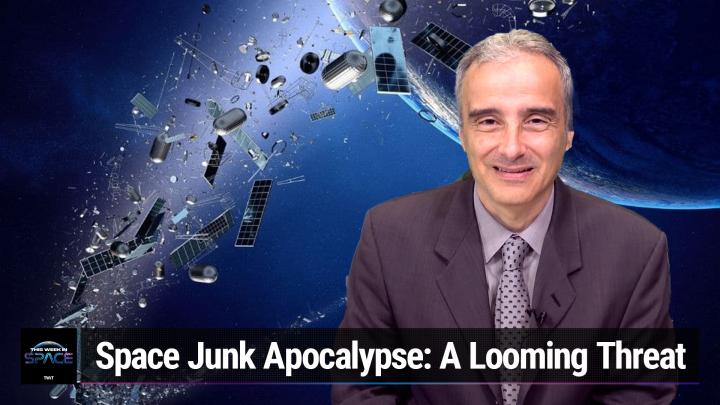The Junkyard in Space: How Orbital Debris Threatens the Future of Space Exploration
Created with AI, edited by humans.
In the latest episode of This Week in Space, hosts Rod Pyle and Tariq Malik were joined by Dr. John Crassidis, SUNY Distinguished Professor and Moog Endowed Chaired Professor of Innovation at the University at Buffalo, to discuss the critical issue of orbital debris and its potential to impact the future of space activities.
What is Orbital Debris?
Dr. Crassidis defines orbital debris as anything in space that is no longer useful, ranging from tiny paint flakes to defunct satellites and spent rocket stages. The problem with this debris is that it travels at extremely high velocities, around 17,500 miles per hour, making even small objects potentially destructive in a collision.
The Kessler Syndrome and Its Consequences
One of the most alarming potential consequences of the growing orbital debris problem is the Kessler Syndrome, a scenario in which collisions between objects generate more debris, leading to a cascading effect. Dr. Crassidis warns that if we don't take action to slow the growth of debris, the Kessler Syndrome could render low Earth orbit essentially unusable within the next 50 years.
Challenges in Tracking and Removing Debris
Tracking the estimated 47,000 pieces of debris larger than a softball is no easy feat, as Dr. Crassidis explains. Limited sensor coverage, tumbling debris, and the need to accurately predict the path of these objects all contribute to the complexity of this task. As for removal, current techniques are largely infeasible due to the high costs and technological limitations. Dr. Crassidis emphasizes the need for international cooperation and improved satellite designs to mitigate the growth of debris.
Looking Beyond Low Earth Orbit
While much of the discussion around orbital debris focuses on low Earth orbit, Dr. Crassidis points out that the problem extends beyond this region. Debris is already accumulating around the Moon, highlighting the importance of addressing this issue as we push further into space.
The Path Forward
To tackle the orbital debris crisis, Dr. Crassidis stresses the urgency of debris mitigation through international cooperation, improved satellite design, and continued research into cost-effective removal technologies. By investing in these areas and working together as a global community, we can help ensure that the wonders of space remain accessible for generations to come.
To learn more about the fascinating insights shared by Dr. John Crassidis and our expert hosts, Rod Pyle and Tariq Malik, be sure to listen to the full episode of This Week in Space.
